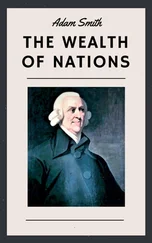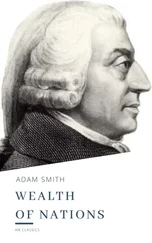With the support of his father’s political and family connections, Smith was accepted into the University of Glasgow in 1737 at the age of 14. Glasgow was just beginning its spectacular growth into one of the industrial powerhouses of Britain. At this time it was small, relatively quiet in political terms, and had a reputation of being a safe, Protestant, and Hanoverian city. But more than that, it was beginning to develop a reputation as one of the most innovative centres of learning in Europe. Glasgow had recently reformed its teaching practices to abandon the regenting system, where students were taught all subjects by one generalist tutor, in favour of a system of specialist professors. Among these were Francis Hutcheson (1694–1746), Smith’s beloved teacher of moral philosophy, who was central in encouraging the practice of teaching in English rather than Latin, and in introducing modern philosophical texts to the classroom. Another was Robert Simson (1687–1768), whose classes on mathematics and geometry quickly became a favourite of Smith’s. 1
Smith’s early education had provided him with a level of skill in Latin that allowed him to bypass the remedial first year and move directly into the higher-level classes in Latin, Greek, Natural Philosophy, Logic, and Moral Philosophy. He spent the next three years proving himself to be a brilliant student and was able to secure a Snell Exhibition to fund further study at Balliol College, Oxford. We know very little about how Smith spent his six years at Oxford, but we do know that he found the unreformed nature of the colleges and the lack of attention to teaching to be a sore disappointment after the rigour of his early training at Glasgow. Most accounts suggest that he spent his time in private reading and research and continued to develop a broad range of interests across the arts and sciences. It was also likely that this period saw Smith first come across the work of the man who would later be his closest intellectual friend, David Hume (1711–76). Indeed, Smith’s poor health at this time, which he attributed to excessive study, paralleled the experience of his friend Hume in the composition of his Treatise of Human Nature (1739/40): a book whose arguments clearly shaped much of Smith’s thinking from this time onwards.
Smith was safely, if (given anti-Scottish prejudice) uneasily, ensconced at Oxford during the political upheavals of 1745–6, which saw the final attempt to restore the Stuart family, led by Charles Edward Stuart (Bonnie Prince Charlie) at the head of a force largely drawn from the clans of Highland Scotland. The defeat of this uprising at Culloden in 1746 marked the end of the Stuart cause as a serious threat to the political stability of the new Great Britain, but it also reinforced the fragility of the political institutions with which Smith and his family identified themselves. If the city of Edinburgh itself could fall to a poorly armed clan uprising, then nothing was certain. Smith returned to Scotland, and his mother’s home in Kirkcaldy, in 1746. As the political situation stabilized, he began to cast about for a suitable career. The Snell Exhibition had originally been intended for those training to become priests in the Episcopalian Church, but this condition had lapsed by Smith’s time and it seems that he never seriously entertained an ecclesiastical career.
In 1748, Smith began his professional career as an academic. Henry Home, Lord Kames (1696–1782), the acerbic doyen of Edinburgh society, arranged for him to give a series of freelance lectures in Edinburgh. The lectures proved to be highly successful and he repeated them in the following two years. Kames hoped that Smith’s erudition and eloquence, honed during his time at Glasgow and Oxford, would find a ready audience among the emergent public intellectuals of polite Edinburgh society. Smith took as his topics rhetoric and jurisprudence and delivered his lectures in competition to those of the University of Edinburgh. That said, the material that he covered and the way in which he covered it meant that it was unlike anything then taught at the University. His theories of rhetoric and law, which we will cover later in this volume, have their genesis at this time.
The popularity of the lectures led to Smith being appointed to the Chair of Logic at the University of Glasgow in 1751. His inaugural address, De Origine Idearum (On the Origin of Ideas), does not survive, but the title is intriguing as it points us towards the theory of ideas, which would become central to his conceptions of how the human mind operates. On arriving at Glasgow, Smith revised the curriculum to make it more to his own taste. The old medieval logic syllabus was discarded in favour of one that centred on rhetoric, or, to be more accurate, argument and speech in modern English. The focus on plain ordinary language is a key feature of Smith’s thinking.
In 1752, soon after his employment at Glasgow, Smith was faced with something of a professional and personal dilemma. The death of the Professor of Moral Philosophy prompted him to move from the Chair of Logic to that newly vacant post, and the idea was mooted that David Hume should be considered for the Logic Chair. This proved too controversial an appointment for many, as Hume’s supposedly radical anti-religious views did not sit well with the rest of the faculty. Smith was forced to admit that, though he would have loved to have Hume as a colleague, his appointment would have been too contentious and may have harmed the institution. Smith’s earliest publications, including a letter to the short-lived Edinburgh Review of 1755–6, appear at this period.
Smith was a popular professor who took his educational role very seriously. Many of the personal reminiscences that his contemporaries have about him suggest that he approached the stereotype of the absent-minded professor: talking to himself, wandering out of doors in his nightgown, accidentally trying to make tea from rolled-up pieces of bread. While these images are endearing, they sit in more than a little tension with the reality of Smith as a gifted and professional teacher and a skilled university administrator whose roles included complicated tasks involving the finances of the University and the development of the library. In addition to his university duties, Smith was able to publish his first great book, The Theory of Moral Sentiments , in 1759.
As his reputation grew, Smith was able to attract students from as far afield as Russia, Geneva, and the American colonies. Among those who attended Smith’s classes were the future biographer James Boswell (1740–95) and the gifted legal scholar John Millar (1735–1801), who would himself become a Glasgow Professor and later educate Smith’s heir David Douglas (1769–1819). Smith’s reputation attracted the attention of the politician and future Chancellor of the Exchequer Charles Townshend (1725–67). Townshend was the stepfather to the young Henry Scott, the 3rd Duke of Buccleuch (1746–1812), one of the wealthiest landowners in Scotland. Townshend persuaded Smith to resign his position at Glasgow after 13 years and become a travelling tutor to the young Duke. Though initially reluctant to leave his professorship at Glasgow, Smith was persuaded by the fact that the position would not only allow him to travel to the Continent, but would also come with a lifetime pension that would allow him to devote himself to study and writing.
Smith spent the years 1764–6 chiefly in France, basing himself in Toulouse and then Paris. He met many of the leading figures of the French Enlightenment, the so-called ‘ philosophes ’. Among these were Voltaire (1694–1778), Anne-Robert-Jacques Turgot (1727–81), François Quesnay (1694–1774), and several of the French economic thinkers known as the Physiocrats. Smith’s time in France was cut short by the tragic death of the Duke’s younger brother, and he returned to London with his pupil. Smith remained in London in 1766 and 1767 and used the time to produce a revised third edition of The Theory of Moral Sentiments . He would remain close to Buccleuch throughout his life and acted as an adviser on the Duke’s financial matters and on his improvements to his vast estates.
Читать дальше












